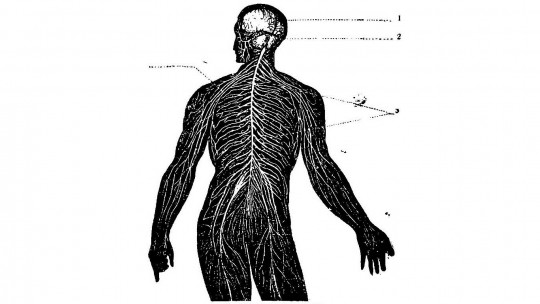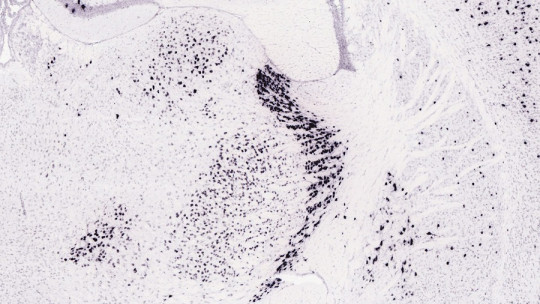
Sometimes traumatic injuries cause damage to the nerve fibers that transmit tactile sensations to the brain. In these and other cases it is possible that the perception of pain intensifies due to sensitization of the nervous system; When this happens we speak of hyperalgesia.
In this article we will describe What is hyperalgesia, what causes it and how is it treated?. We will also explain the different types of hyperalgesia that have been proposed so far, as well as the relationship of this phenomenon with another very similar one: allodynia.
What is hyperalgesia? What causes it?
Hyperalgesia is defined as a sustained increase in pain sensitivity. In people who suffer from this alteration, the sensory threshold from which pain is experienced is reduced, so that stimuli that would not be very painful for most people can be very painful for those who have hyperalgesia.
It can be caused by different causes, such as injuries to the nociceptors (cells that detect pain signals) or the long-term opioid use like morphine and heroin. Depending on the specific cause of hyperalgesia and the way it is managed, it will constitute a transient or chronic phenomenon.
In most cases, hyperalgesia is due to sensitization of peripheral nerve fibers due to focal lesions, which provoke inflammatory or allergic responses, increasing the release of chemical substances related to pain. These reactions can become chronic under certain circumstances.
Relationship with allodynia
Hyperalgesia is closely related to allodynia, which consists of the appearance of pain sensations in response to stimuli that are objectively non-painful such as passing a brush through your hair or coming into contact with water at a slightly elevated temperature.
Allodynia and hyperalgesia are frequently studied together because there are notable similarities between both phenomena. In many cases the difference between both phenomena is limited to the intensity of the stimulation: we speak of allodynia when the pain should not appear, and hyperalgesia when it is more intense than one would expect.
Both hyperalgesia and allodynia have been associated with alterations in the central and peripheral nervous system that cause an exaggerated perception of pain. It is hypothesized that fibromyalgia, migraine and complex regional pain syndrome They are also related to similar dysfunctions.
Types of hyperalgesia
There are different types of hyperalgesia depending on the causes of its appearance and the type of stimuli that cause pain. Below we will describe the most relevant ones.
1. Primary
Primary hyperalgesia appears as a result of an injury. It consists of an increase in the sensitivity of the nerve endings of the nociceptors in the damaged region, although it also involves alterations in the processing of pain signals at the level of the central nervous system.
2. Secondary
Unlike what happens in primary hyperalgesia, in secondary hyperalgesia the painful sensations occur in regions other than that of the injury; However, it can be used both to talk about excessive pain in areas surrounding the damaged area and in others that are more distant.
In this case, the hyperalgesia is not due to the sensitization of the nociceptor fibers but is attributed exclusively to central nervous system dysfunctions. Even so, stimulation is necessary for the person to feel pain; If this does not occur, we would speak of allodynia.
3. Opioid-induced
If continued long term, the use of opiates (morphine, heroin, methadone, hydrocodone, oxycodone, etc.) can cause nervous sensitization to painful stimuli. In fact, it seems that even the occasional intake of these substances has the potential to produce temporary symptoms of hyperalgesia and allodynia.
4. Thermal
We speak of thermal hyperalgesia when the stimulus that causes pain is related to temperature; In these cases the person feels excessive pain when coming into contact with hot or cold stimuli.
5. Mechanics
Mechanical hyperalgesia appears as a consequence of sensations of pressure, vibration, puncture, friction, etc., which activate the mechanical nociceptors of the peripheral nervous system.
We can distinguish two subtypes of mechanical hyperalgesia: static and dynamic. The first is associated with a single contact with the painful stimulus, while dynamic hyperalgesia occurs when the object is in motion.
6. Motor
Normal muscle and joint movements, for example those involved in behaviors such as walking or getting up from a seat, can cause severe pain in people with hyperalgesia.
Treatment and management
Although the treatment of hyperalgesia must be adapted to the specific causes of the alteration, in general It is usually treated using analgesic medications ; The same happens with allodynia, neuropathic pain and other disorders related to abnormal pain perception.
In this way, non-steroidal anti-inflammatory drugs (NSAIDs) are usually used, such as ibuprofen and aspirin, glucocorticoids (cortisol, prednisone…) or anticonvulsants such as pregabalin and gabapentin, as well as NMDA receptor antagonists and atypical opiates, for example Tramadol.
The most appropriate medication for each patient is often difficult to find in cases of hyperalgesia, so it is likely that different analgesic drugs will have to be tried before the pain can be treated effectively.
In the case of hyperalgesia due to substance use as happens in chronic patients hypersensitized due to the abuse of morphine or other opiates, research has revealed that, paradoxically, reducing the dose can be useful to alleviate pain sensations.
Bibliographic references:
- Sandkuhler, J. (2009). Models and mechanisms of hyperalgesia and allodyinia. Physiological Reviews, 89: 707-758.








